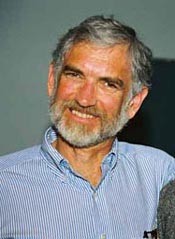Crater Lake, Oregon: Historical Earthquakes
— This text is from the USGS’s Cascades Volcano website
— Excerpt from: Bacon, et.al., 1997, Volcano and Earthquake Hazards in the Crater Lake Region, Oregon: U.S. Geological Survey Open-File Report 97-487
The West Klamath Lake fault zone (WKLFZ), composed of several individual faults with lengths of up to 15 kilometers and an aggregate length of 50 to 70 kilometers, has been mapped through Crater Lake National Park west of the caldera. One of its constituent faults, the Annie Spring fault, passes less than 1 kilometer west of Rim Village. All of the faults of the WKLFZ trend approximately north south and have mainly dip-slip displacement such that the east side is dropped down relative to the west side. By determining the ages of lava flows that have been offset by the faults, the long-term rate of vertical displacement is known to be about 0.3 millimeters per year. The lengths of the faults and the measured displacements suggest that the WKLFZ is capable of tectonic earthquakes as large as magnitude (M) 7 1/4. The recurrence interval of large earthquakes is unknown but probably is between 3,000 and 10,000 years. Although few earthquakes have been recorded in the Crater Lake area, the known events are consistent with the WKLFZ being active. Moreover, the September 1993, Klamath Falls earthquakes (the two largest events were around Magnitude 6.0) occurred farther south along the same general zone. Many other potentially active faults are present east of the Cascades, notably along the east side of Klamath valley (East Klamath Lake fault zone). Local volcanic earthquakes would produce ground motion at Crater Lake but the likely maximum magnitude of such events is about 5, significant but far smaller than for tectonic earthquakes. An additional source of earthquakes is the Cascadia subduction zone, the fault zone that forms the boundary between the tectonic plates that contain the North American continent and the Pacific Ocean floor. Although distant, the potential for this zone to generate M = 8-9 earthquakes means that shaking of up to several minutes duration could occur at Crater Lake.


